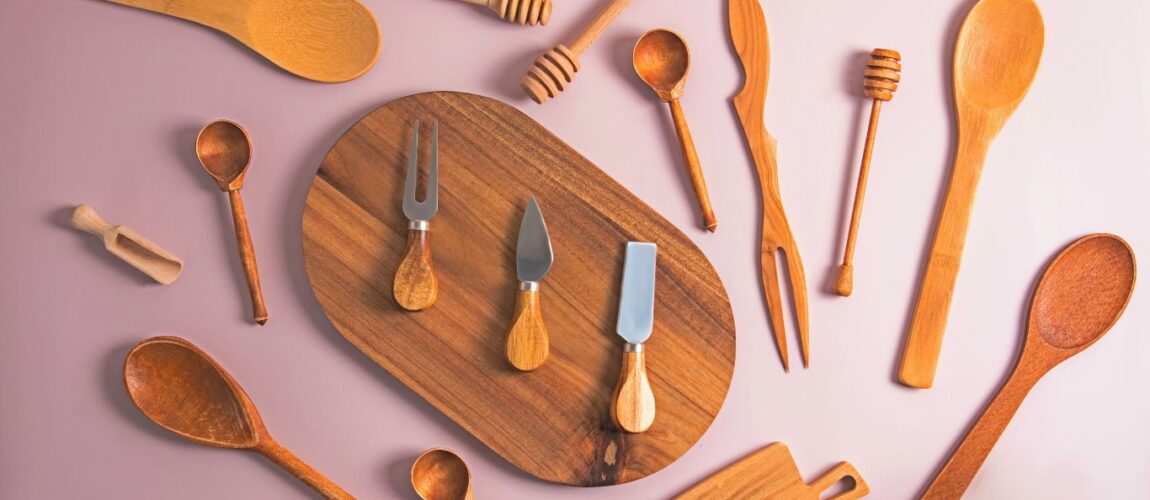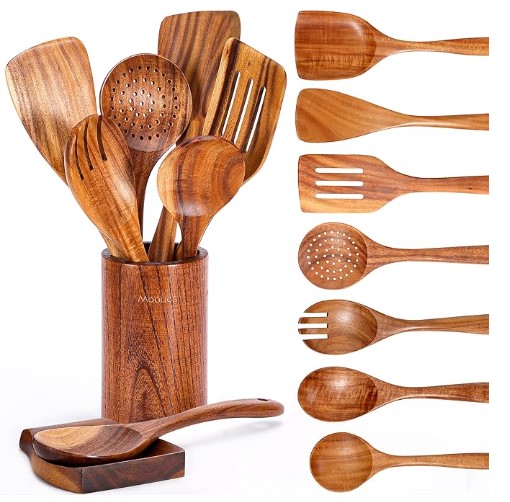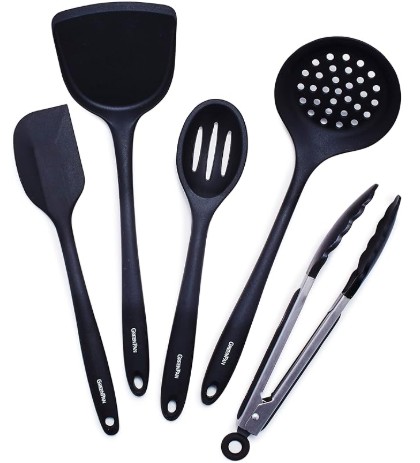The kitchen is the heart of the home, and the tools you use can make a significant difference in your cooking experience. When it comes to utensils, the debate between plastic and alternatives like bamboo, silicone, and wood has gained momentum as more people prioritize sustainability, functionality, and safety. Let’s dive into the pros and cons of each material to help you decide what’s best for your kitchen.
Plastic Utensils
Plastic utensils have long been a staple in many kitchens due to their affordability and availability. They come in a variety of colors, shapes, and sizes, making them a popular choice for beginners and casual cooks. However, they come with some drawbacks:
Pros:
- Affordable: Plastic utensils are often the cheapest option.
- Lightweight: Easy to handle and store.
- Non-reactive: Safe to use with acidic or alkaline foods.
Cons:
- Durability: Plastic utensils are prone to cracking, warping, and melting, especially when exposed to high heat.
- Health Concerns: Many plastics can leach harmful chemicals like BPA and phthalates when exposed to heat.
- Environmental Impact: Plastic utensils contribute to landfill waste and are rarely recyclable.
Teak/Bamboo Utensils
Teak and Bamboo are natural, eco-friendly materials that has become increasingly popular in recent years. Known for its durability and sustainability, bamboo utensils offer a more environmentally conscious choice.
Pros:
- Eco-friendly: Teak and Bamboo are renewable, biodegradable, and requires minimal resources to grow.
- Lightweight and Durable: They are strong yet lightweight, making them easy to handle.
- Aesthetic Appeal: Teak and Bamboo utensils add a rustic, natural touch to your kitchen.
Cons:
- Maintenance: Bamboo utensils require regular oiling to prevent drying and cracking.
- Heat Sensitivity: Prolonged exposure to moisture or heat can weaken bamboo over time.
- Limited Versatility: Not ideal for heavy-duty tasks or high-heat cooking.
Silicone Utensils
Silicone utensils have gained a reputation for being both versatile and kitchen-friendly. They are made from food-grade silicone, a non-toxic and heat-resistant material.
Pros:
- Heat Resistance: Silicone can withstand high temperatures without melting or degrading.
- Non-stick: Perfect for use with non-stick cookware, as it won’t scratch the surface.
- Easy to Clean: Silicone is dishwasher-safe and non-porous, making it resistant to stains and odors.
- Durability: Long-lasting and flexible, silicone utensils are hard to damage.
Cons:
- Environmental Concerns: While more sustainable than plastic, silicone isn’t biodegradable.
- Cost: Silicone utensils are often pricier than plastic or wood.
- Flexibility Issues: Some find silicone’s flexibility less suitable for tasks that require firm pressure.
Wood Utensils
Wood utensils are a timeless kitchen classic, valued for their functionality and charm. Often made from hardwoods like maple, beech, or cherry, they’re as practical as they are beautiful.
Pros:
- Non-reactive: Wood doesn’t react with acidic foods and is safe for all types of cookware.
- Durable: High-quality wooden utensils can last for years with proper care.
- Eco-friendly: Biodegradable and renewable, wood is an environmentally conscious choice.
- Aesthetic Appeal: Adds warmth and elegance to your kitchen.
Cons:
- Maintenance: Wooden utensils require hand washing and occasional oiling to prevent cracks and warping.
- Porosity: Wood can absorb stains and odors if not properly cared for.
- Not Heatproof: Prolonged exposure to high heat can damage wooden utensils.
Which Should You Choose?
The best material for your kitchen utensils depends on your cooking style, priorities, and values. Here are a few considerations:
- Sustainability: If reducing your environmental footprint is a top priority, bamboo and wood are excellent choices.
- Versatility: For a balance of heat resistance and durability, silicone is hard to beat.
- Affordability: If you’re on a tight budget, plastic utensils may be tempting but keep in mind their shorter lifespan and environmental impact.
Incorporating a mix of materials in your kitchen can also be a practical approach. For example, silicone spatulas work well with non-stick cookware, while wooden spoons are ideal for stirring soups or sauces in metal pots. By understanding the strengths and limitations of each material, you can build a utensil collection that supports your cooking adventures and aligns with your values.
As for me, I’ve found that wood and silicone utensils strike the perfect balance of functionality, durability, and sustainability. They’re my go-to choices for keeping my kitchen both practical and eco-friendly. What about you? Which type of kitchen utensils do you prefer, and why?
This post contains affiliate links, which means that if you click on one of the product links, I’ll receive a small commission. Also, as an Amazon Associate I earn from qualifying purchases. Thank you so much for clicking through and helping to support this little blog business of mine!



